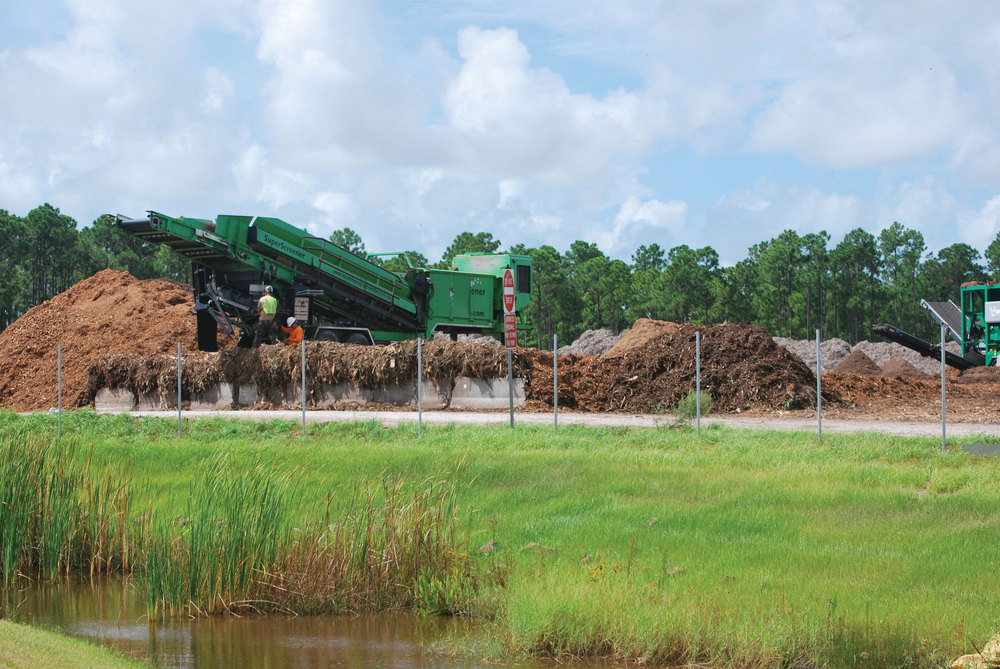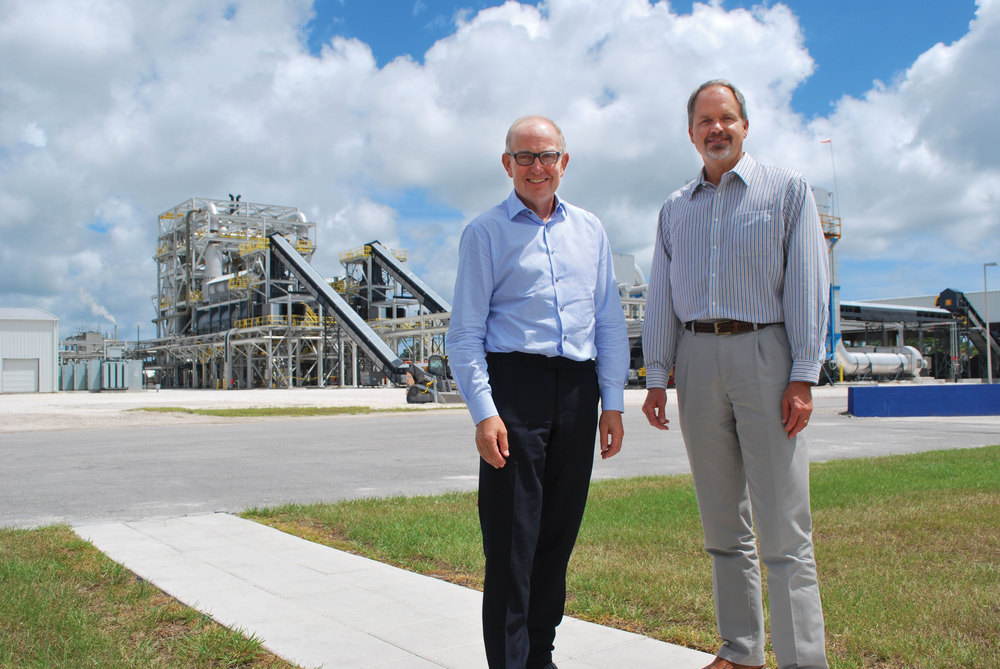The Value of Versatility







PHOTO: BBI International, Susanne Retka Schill
October 7, 2013
BY Sue Retka Schill
The staff at Ineos Bio New Planet Energy LLC has settled into the daily routine of commercial production at the first-of-its-kind cellulosic ethanol and renewable power facility near the Indian River Landfill outside of Vero Beach, Fla. A steady stream of trucks delivers yard and tree trimmings to the feedstock yard, where the material is shredded and piled for open-air drying in the Florida sun before being moved over to the covered shelter and fed into a dryer and gasifier. The heat recovered from the cooling gas is used to generate 6 MW of electricity and the cleaned, cooled syngas goes to a patented anaerobic bacterial fermentation process producing 8 MMgy of ethanol. In the continuous process, feedstock entering into the gasifier exits as ethanol less than 10 minutes later.
The project is a joint venture between Florida-based New Planet Energy Florida LLC and Ineos Bio, a division of global chemical company the Ineos Group. The $130 million project received a $50 million U.S. DOE matching grant in December 2009 and a $75 million USDA loan guarantee in January 2011. A groundbreaking ceremony was held a month later. The process design was worked out in over 40,000 hours of operation since 2003 at a fully-integrated pilot plant in Fayetteville, Ark., using a wide variety of feedstocks. Ineos purchased the pilot facility and technology in 2008 from Bioengineering Resources Inc., forming its IneosBio division to commercialize the process.
Advertisement
Advertisement
The Ineos Group also is relatively new, being formed in 1998 to acquire a petrochemical refinery in Antwerp, Belgium. In a series of acquisitions, Ineos purchased technology rights and production facilities from companies such as Dow Chemicals, Rhodia, BASF, Chevron, Phillips, Monsanto, Hoechst and, in 2006, BP Chemicals. Sales in the past two years have topped $43 billion from 15 Ineos business segments that manufacture a wide range of chemical intermediates. The production network spans 51 manufacturing facilities in 11 countries.
In that context, Ineos Bio’s work in Florida seems small, but it is the first new technology Ineos has commercialized itself, although it has licensed more than 40 around the world. Peter Williams is CEO of both Ineos Bio and Ineos Technologies, which licenses the company’s technology portfolio. He says the company’s licensees typically take four years from project launch to being operational. “That’s with known technologies and experienced companies,” he adds. Ineos is quite pleased, he says, with the team’s accomplishment in bringing a new technology online in just five years.
Advertisement
Advertisement
Mark Niedershulte, explains that at BP Chemicals and other earlier positions, he has worked on six new technologies where each took about 20 years in development. Given that University of Arkansas professor James Gaddy first isolated the ethanol-producing organism in 1992, this project fits into that timeline. When Ineos Bio purchased the technology rights and Arkansas pilot facility five years ago, Niedersholte says they focused their work on optimizing two new technologies, biomass gasification and the microbial fermentation, into ethanol. Other systems such as the generator and distillation unit were well-established technologies purchased from others.
The Ineos Bio gasification process is a two-step, oxygen-blown technology that converts the prepared, dried biomass into a synthesis gas. Feedstocks of different bulk density, particle shape and size may be mixed together to optimize feed rate and minimize entrained air. Upon exposure to the heat in the lower chamber of the gasifier, further drying takes place followed by pyrolysis, generating a pyrolysis gas that passes through to the upper chamber where it is mixed with more oxygen, generating more heat from partial combustion. The high temperature and residence time crack the pyrolysis gases into carbon monoxide, hydrogen and carbon dioxide. No tars or aromatic hydrocarbons are present in the syngas. The gasification proceeds in a reducing environment, with insufficient oxygen present for complete oxidation of the carbon present. This reducing environment suppresses the formation of dioxins and furans, and any dioxins or furans introduced with the feedstock are destroyed. The gasifier also operates at slightly negative pressure to prevent the escape of gases.
The hot synthesis gas is quenched and cleaned and the heat recovered to generate renewable electricity. The cooled, cleaned syngas is compressed as it is introduced to the patented fermentation process at low temperature and pressure where bacteria rapidly convert the carbon and hydrogen into ethanol. Most of the syngas is converted to ethanol and any unconverted vent gas is cleaned and combusted to generate additional renewable power. Sufficient heat and power are generated and recycled in the integrated process to meet the facility’s entire energy needs, with between 1 and 2 MW of surplus power exported to the grid. With all its waste feedstock virtually local, and its ethanol being shipped to nearby Florida terminals as well, Ineos Bio has an impressive energy balance.
Author: Susanne Retka Schill
Senior Editor, Biomass Magazine
sretkaschill@bbiinternational.com
701-738-4922
Upcoming Events





